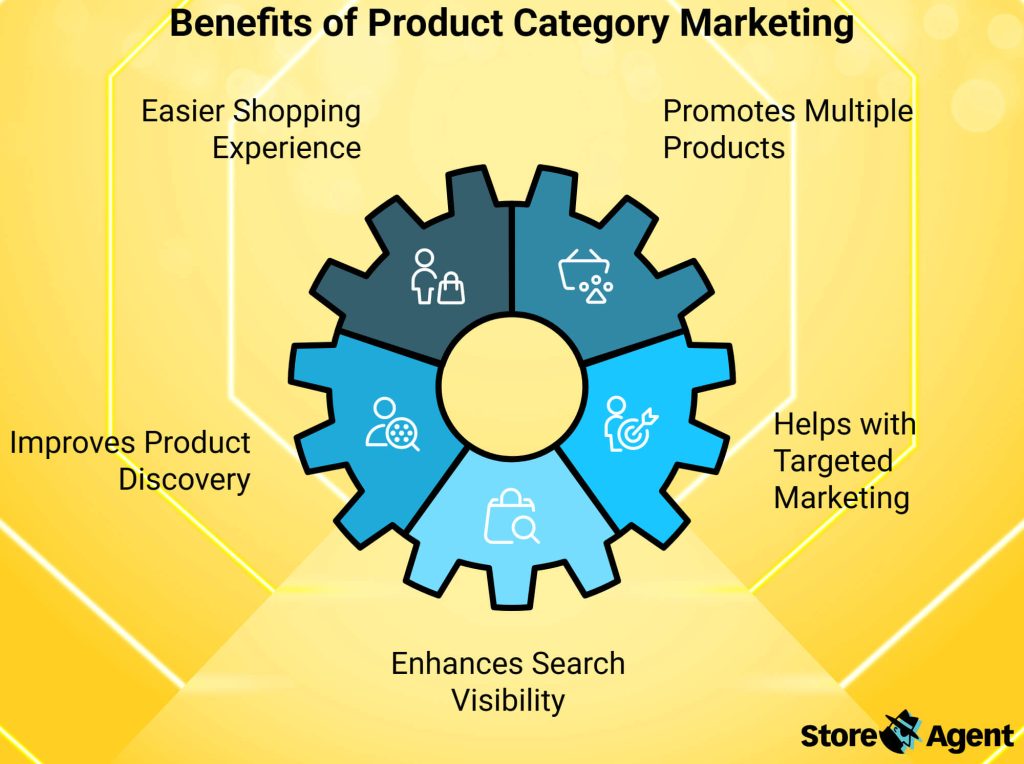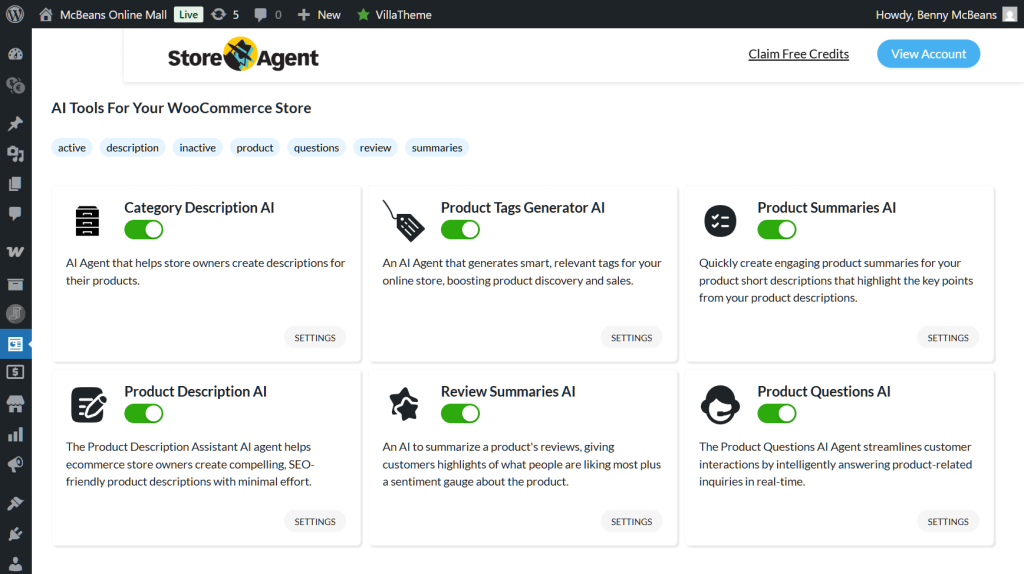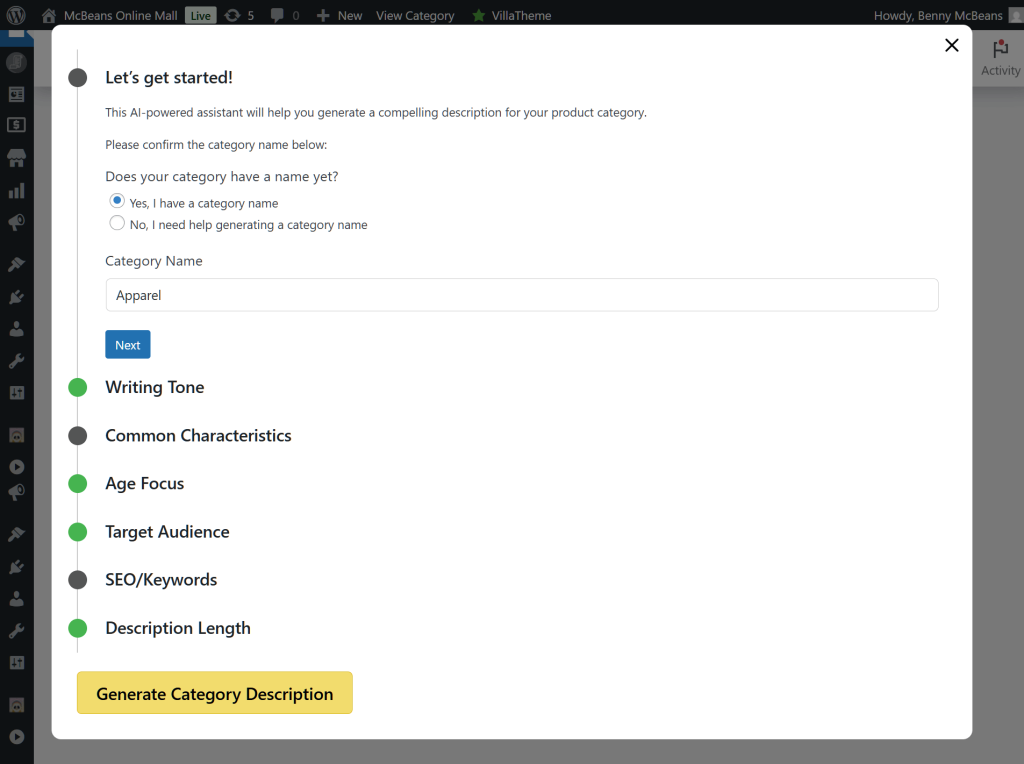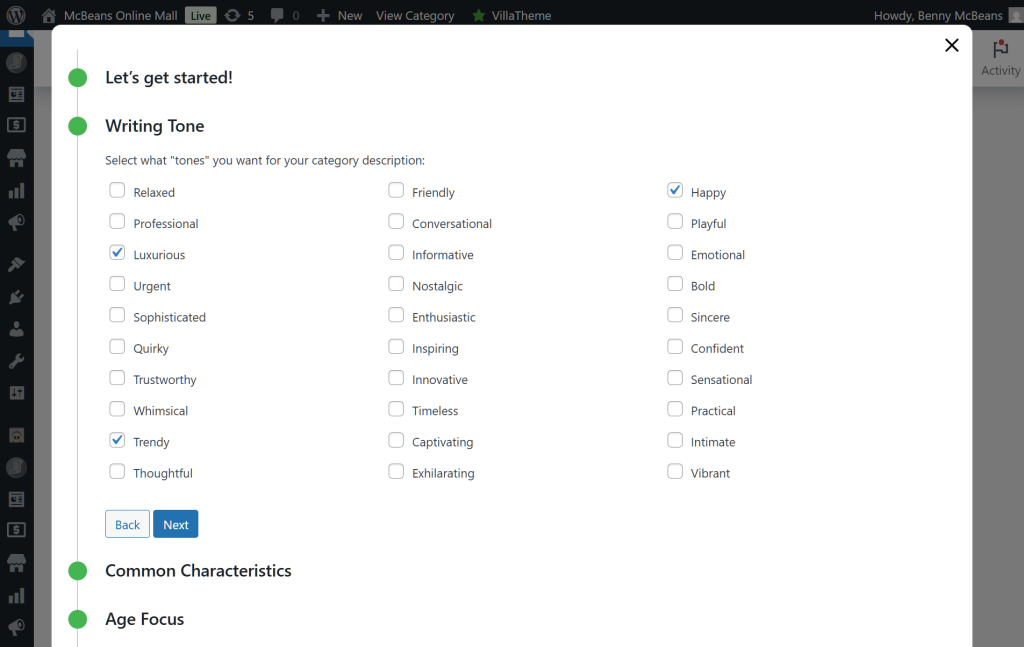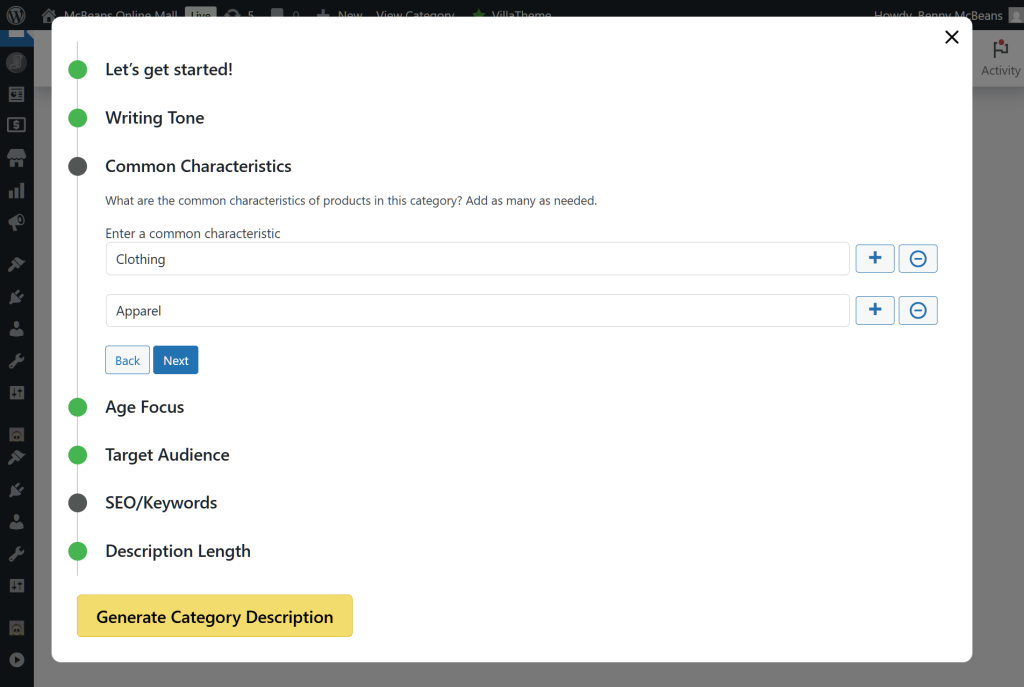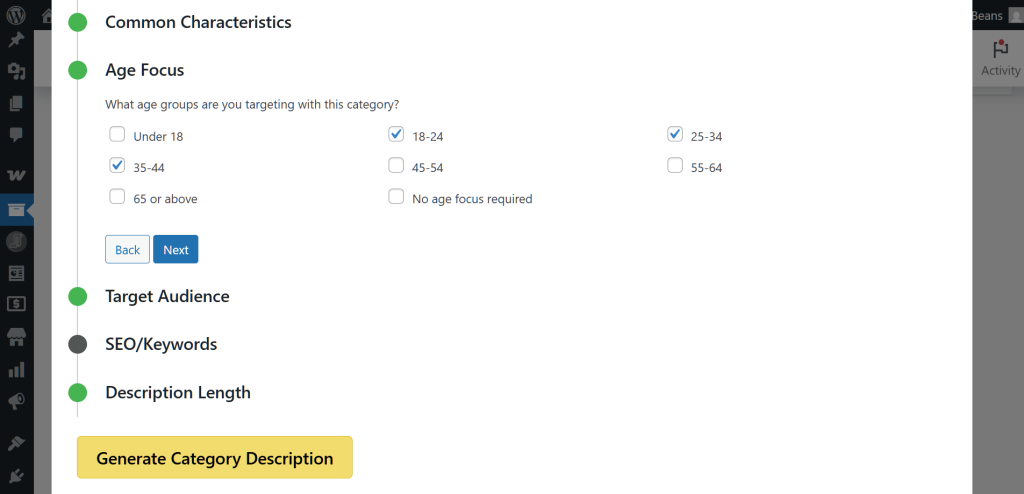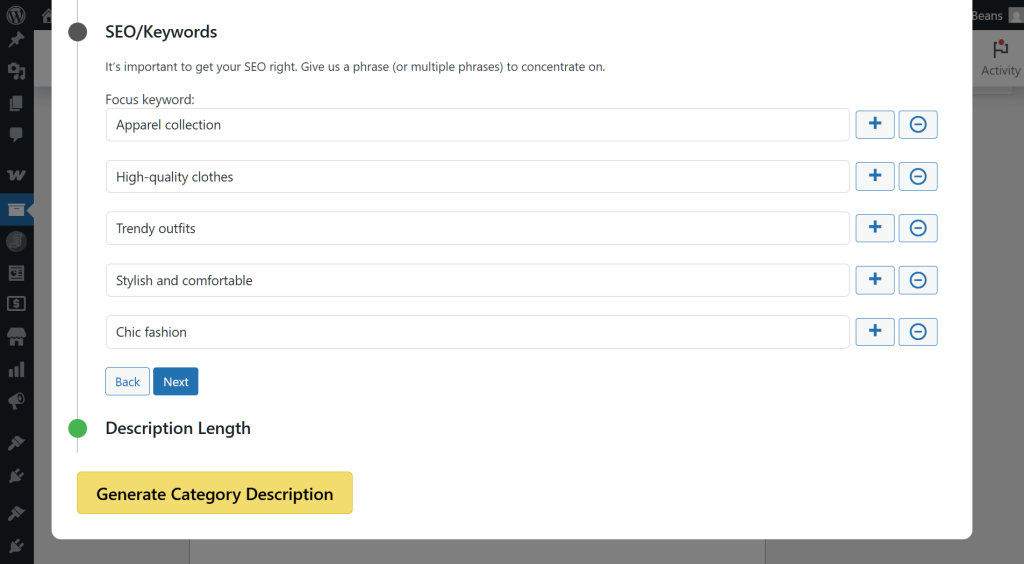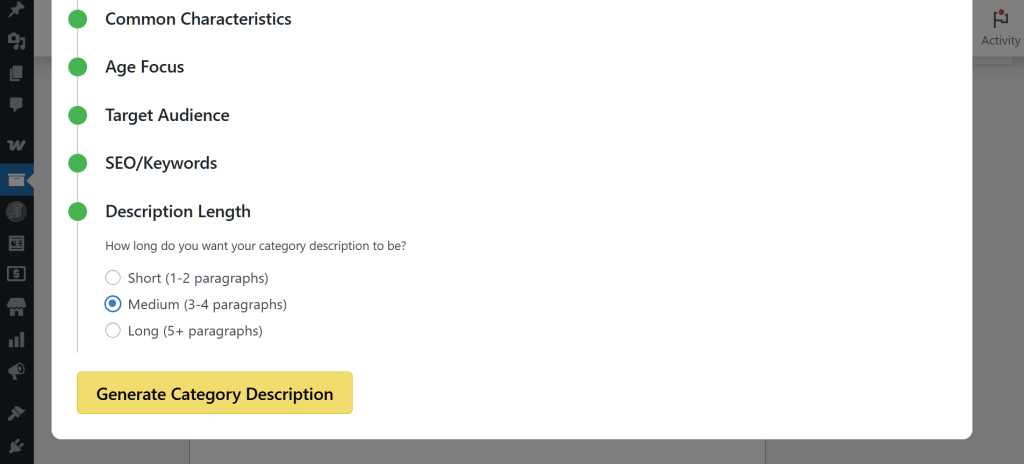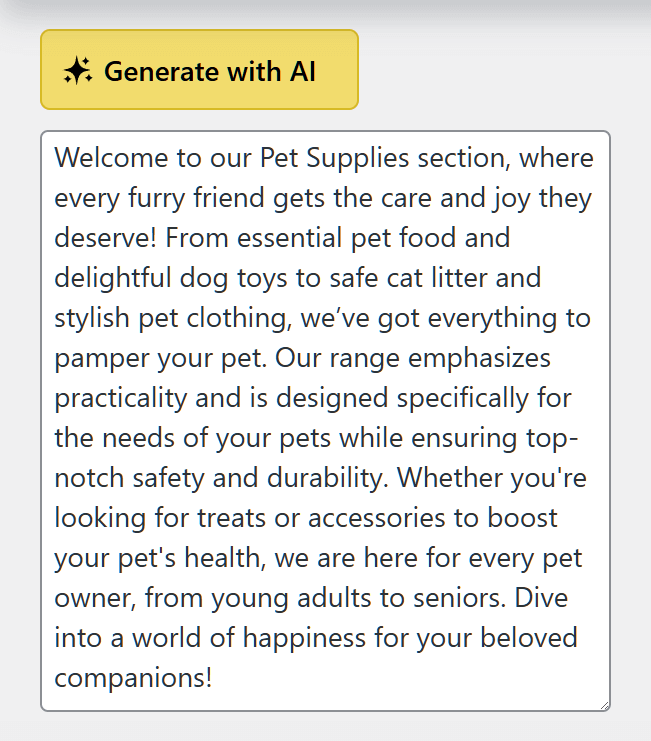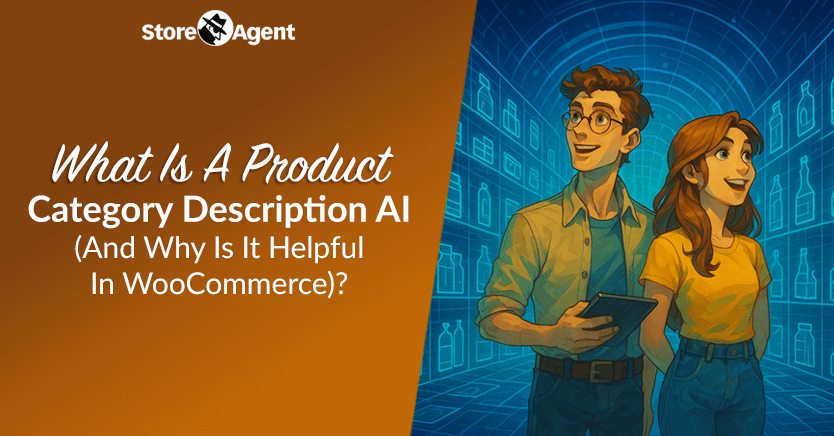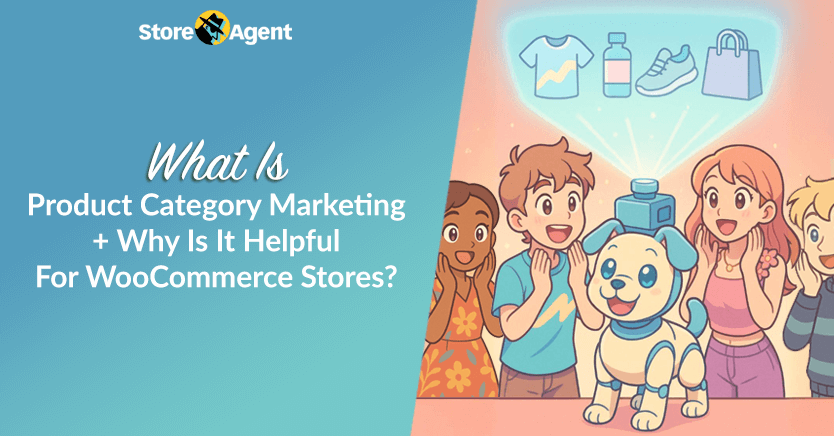
What is product category marketing? It’s a smart way to promote your products by grouping them together. When done right, it can make shopping easier for your customers and help boost your sales.
In this guide, we’ll break down how this strategy works and why it matters for your WooCommerce store. We’ll also show how AI can help make your product categories more effective at reaching the right shoppers.
So let’s get started!
- I. What Is Product Category Marketing?
- II. Benefits Of Product Category Marketing
- III. 6 Product Category Marketing Strategies To Boost Your WooCommerce Store
- IV. Using Category Description AI To Boost Product Category Marketing
- Conclusion
I. What Is Product Category Marketing?
Product category marketing means grouping similar products together and promoting those groups to the right customers. Instead of promoting a single item, a store might promote entire groups of products, like fashion or skincare items. This makes it easier and faster for shoppers to find what they want.
This approach makes shopping simpler and more organized for buyers. It also lets businesses show off product groups that match what customers are looking for.

Examples of commonly promoted product categories
Different businesses use and promote different product categories. For example, if your store sells books, the categories you could market could include “fiction,” “non-fiction,” or “children’s books.” Don’t expect online bookstores to promote the “food and beverages” category!
With that in mind, here are some common product categories (and examples of the kinds of products you’ll find in each) that you’ll often see promoted in online stores and marketplaces:
- Electronics
Examples: smartphones, laptops, headphones
- Clothing & Fashion
Examples: t-shirts, jackets, shoes
- Home & Kitchen
Examples: cookware, furniture, bedding
- Beauty & Personal Care
Examples: skincare products, makeup, hair care
- Sports & Outdoors
Examples: fitness gear, camping equipment, bicycles
- Toys & Games
Examples: puzzles, board games, action figures
- Books & Media
Examples: novels, magazines, movies
- Health & Wellness
Examples: vitamins, fitness trackers, massage tools
- Pets
Examples: pet food, toys, grooming supplies
- Automotive
Examples: car accessories, tools, cleaning products
II. Benefits Of Product Category Marketing
Promoting your products in groups instead of individually can help your store sell more and grow.
Here are some ways this strategy helps:
1. Easier shopping experience
Product category marketing helps customers find what they need quickly by organizing items into clear sections. As a result, it saves time and reduces frustration.
For example, when someone is searching for running shoes, they can go straight to “Sports & Outdoors” or “Footwear” instead of browsing kitchen tools or phone cases.
2. Promotes multiple products at once
When you promote whole categories instead of single items, you can showcase a range of products together. This helps customers see everything you offer in one go, making it easier to sell more at once.
For instance, advertising your “Outdoor Gear” category lets shoppers check out tents, backpacks, and sleeping bags all at the same time, encouraging bigger orders.
3. Improves product discovery
What happens when products are organized into categories and promoted as groups on your site? Basically, customers can easily explore related items they might not have thought to look for before. This helps them discover new products they didn’t know they wanted.
For instance, while looking through “Fitness Gear,” a shopper might spot resistance bands or yoga mats they hadn’t considered before. This could lead to extra purchases.
4. Helps with targeted marketing
When your products are organized into clear categories, it’s easier to create ads or emails that focus on what specific groups of customers want. Instead of sending a general message to everyone, you can tailor your promotions to match people’s interests.
Let’s say you run an online bookstore, and you know a customer loves horror novels. You can send them special deals just on your “Horror” books. This makes it more likely they’ll notice the offer and make a purchase.
5. Enhances search visibility
Organizing your products into clear categories helps search engines, such as Google, understand what your store sells. When your categories are easy to follow, it’s more likely that your products will show up when people search for related items. This also helps platforms like Google Shopping display your products correctly.
For example, if you have a “Home Appliances” category with well-organized listings, someone searching for a blender is more likely to see your store’s blender in their search results.
III. 6 Product Category Marketing Strategies To Boost Your WooCommerce Store
Using product category marketing the right way can help you reach more customers, get noticed more, and sell more products.
Here are some strategies you can try:
1. Feature categories on your homepage
Put your main product categories on your homepage so visitors notice them first. This is a smart way to promote your categories and get people interested in exploring more.
For example, if you’re running a fashion store, show clear images and links for categories like “Men’s Clothing,” “Women’s Shoes,” or “Accessories” to guide shoppers toward what you want to sell.
2. Use category-specific promotions
Create sales or special deals that focus on one product category at a time. This way, you’re promoting a whole group of products instead of just one item.
For example, during the Halloween season, you can run themed promotions using proven Halloween marketing ideas like spooky email campaigns and limited-time flash sales to create urgency and boost category sales.
For instance, you could also run a “Summer Sale” on all “Outdoor Gear” to get more shoppers interested and increase your sales.
3. Create category landing pages
Make landing pages for each product category that show details, popular items, and customer reviews. These pages help promote your categories by making it easier for shoppers to find what they want. Furthermore, they can boost the chances of search engines like Google showing your store in search results.
For example, a “Running Shoes” page with top picks and reviews can attract runners looking for new gear. Moreover, it improves your store’s chances of appearing in Google searches.
4. Send targeted emails by category
Use what you know about your customers to send marketing emails that focus on specific product categories they like. This way, you’re promoting the right group of products to the right people.
Let’s say a customer buys fitness gear often. You can encourage them to buy more by sending emails about new products or special deals in your “Sports & Outdoors” category.
5. Use social media to promote categories
Share posts or ads that focus on a specific product category to reach the right customers. Basically, this kind of marketing uses popular social media platforms such as Facebook and Twitter to highlight groups of products instead of just one item.
Imagine running Instagram ads that show off your “Toys & Games” products. This can catch the attention of people who like action figures and board games, getting them interested in your store and what you sell.
6. Optimize categories for SEO
Use clear and simple language on each category page. Also, add keywords that customers search for. This product category marketing strategy helps search engines like Google understand your categories better. Consequently, it makes it more likely your store will show up when people look for those types of products.
Imagine running an online pet supplies store. You can use keywords like “dog food” or “pet grooming tools” on your category pages. When someone looks for these items online, your store has a better chance of showing up in search results. This means more people might click, visit your site, and buy something.
IV. Using Category Description AI To Boost Product Category Marketing
The rise of AI has given WooCommerce store owners powerful new tools that make running an online store easier and more effective. After all, these tools help automate tasks, improve product listings, and boost marketing efforts, saving time and reaching more customers.
For example, StoreAgent is a collection of AI tools designed to automate challenging yet important eCommerce tasks, including summarizing customer reviews and writing concise product descriptions.
As you can see above, one of StoreAgent’s tools is Category Description AI. This lets you quickly create compelling category descriptions. Therefore, it can provide a powerful boost to your product category marketing.
How StoreAgent’s Category Description AI works
Category Description AI automatically writes descriptions for your main categories and subcategories. It finishes each task in seconds. Thus, it saves you time and lets you focus on other important parts of your business.
All you need to do is give the AI a few key details about your product category, and it handles the rest.
So, what details can you provide the AI?
1. Category name
Does your product category have a name? If not, you can ask the AI to suggest one. Or you can change the name you’re already have’re already using.
Make sure to incorporate appropriate keywords in your category names. After all, this helps search engines show your categories to more online shoppers.
2. Writing Tone
You can inform the AI how you’d like the product category description to sound. For example, if you want it whimsical, simply tick the “Whimsical” checkbox. If you’d prefer it to sound thoughtful, tick “Thoughtful,” instead. You can even tick multiple checkboxes!
Keep in mind that choosing the right writing tone helps your marketing speak directly to your audience. It sets the mood and personality of your descriptions, making them more engaging and memorable.
3. Common Characteristics
Every product category has qualities that make it stand out. You can list these details so the AI can better understand what the category is about. The more it knows, the clearer and more accurate your category descriptions will be.
Stronger descriptions mean better visibility, more clicks, and more chances to convert shoppers into buyers.
4. Age Focus
Are the products in this category meant for a specific age group? If so, let the AI know by selecting the appropriate range. For example, if you’re selling clothing for seniors, tick the “65 or above” checkbox.
Age targeting is a key part of effective marketing. After all, it helps create descriptions that speak directly to the people most likely to buy.
5. Target Audience
Each product category is made for a certain type of shopper. When you tell the AI who it’s for, you help it write descriptions that speak to the right people. For example, if your category targets book lovers, just check the “Book Lovers/Readers” box.
This focus is important for marketing that connects with customers and helps boost sales.
6. SEO/Keywords
SEO helps the right people discover your categories. Thankfully, you can tell the AI which keywords to use in each category description. In the example below, we listed terms shoppers are likely to use when searching for items in the “Apparel” category.
Remember, SEO makes your marketing stronger and helps bring in more customers.
7. Category Description Length
Finally, you can choose whether the description should be short, medium, or long.
Picking the right length helps keep shoppers engaged and supports your overall marketing goals. After all, the right length helps match your store’s style and gives shoppers just enough information to stay interested and take action.
When you’re done entering the product category details, just click the Generate Category Description button. The AI will create your description in seconds, saving you time and helping you market faster!
Want more useful tips on using AI to craft compelling category descriptions? Then check out the following guide:
What Is A Product Category Description AI (And Why Is It Helpful In WooCommerce)?
Conclusion
What is product category marketing? It’s a strategy that promotes groups of similar products to make shopping easier for customers and more profitable for your store.
And with tools like StoreAgent’s Category Description AI, you can craft compelling category descriptions with speed and accuracy. The result? Sharper messaging and stronger marketing.
To recap, this guide explored the following major concepts:
- What is product category marketing?
- Benefits of product category marketing
- 6 product category marketing strategies
- Using Category Description AI for product category marketing
Interested in using Category Description AI for your product category marketing? Explore StoreAgent today and see how it can help your WooCommerce business!
